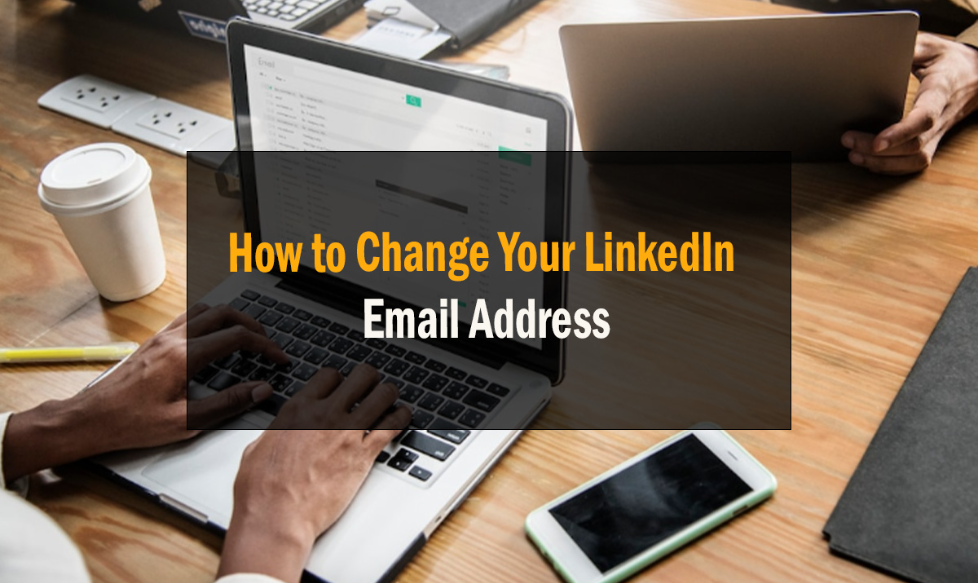Changing your LinkedIn email address might seem like a small task, but it’s an important step in keeping your professional online presence up to date. Whether you’re switching jobs, changing your personal email, or simply want to streamline your contact information, updating your email ensures you don’t miss out on important notifications and connections. Let’s dive into some reasons you might need to make this change!
Why You Might Need to Change Your LinkedIn Email Address

There are several compelling reasons to update your LinkedIn email address. Here are some of the most common:
- Job Changes: If you’ve recently changed jobs, you may want to use your personal email instead of your work email. This ensures you maintain access to your LinkedIn account even after leaving a job.
- Security Concerns: If your email has been compromised or you suspect unauthorized access, it’s crucial to change it for security reasons. A new email can help protect your account.
- Consolidation: Many professionals prefer to have one email for all their networking and professional correspondence. If you’re receiving emails at multiple addresses, consolidating to a single email can simplify communication.
- Professionalism: Sometimes, your old email address might not reflect your professional image. For example, switching from a casual email (like [email protected]) to a more professional one (like [email protected]) can enhance your credibility.
- Inactive Email: If you’re no longer using your previous email address, it’s time to switch. Keeping an inactive email can lead to missed notifications and connection requests.
Regardless of the reason, it’s important to ensure your LinkedIn account is linked to an email you actively check. This way, you stay connected with your network, receive updates, and never miss an opportunity!
Also Read This: Understanding the Check Mark Symbol in LinkedIn Messages
3. Step-by-Step Guide to Updating Your Email on LinkedIn
Changing your email address on LinkedIn is a straightforward process, but it’s essential to follow each step carefully to ensure you don’t miss any notifications or updates. Whether you're switching to a new email for personal reasons or just want to keep your professional contacts organized, here’s how to do it:
- Log into Your Account: Start by opening your web browser and going to the LinkedIn website. Enter your username and password to access your profile.
- Go to Your Profile: Once logged in, click on your profile picture located at the top right corner. This will drop down a menu; select “Settings & Privacy” from the list.
- Navigate to the Account Tab: In the Settings page, you’ll see various tabs on the left side. Click on “Account” to access your account settings.
- Find Email Addresses: Scrolling down, you’ll see a section labeled “Email addresses.” Click on it to manage your current email addresses.
- Add a New Email Address: Look for the “Add email address” button. Click it, then type in your new email address and hit “Send verification.”
- Set as Primary (Optional): If you wish to make your new email your primary one, you’ll need to select the option after verifying it, which we’ll discuss next.
And just like that, you’ve updated your email address! It’s a simple process, but make sure you double-check your new email for typos. An incorrect email can lead to missing important notifications!
Also Read This: Should You Verify Your LinkedIn Profile? Why It Matters for Professionals
4. Verifying Your New Email Address
After you’ve added your new email address, the next crucial step is verification. This ensures that the email you’ve provided is indeed yours and can be used for all LinkedIn correspondence. Here’s how to verify your new email:
- Check Your Inbox: Head over to the inbox of the new email address you just added. LinkedIn will send you a verification email. If you don’t see it, check your spam or junk folder just in case.
- Open the Verification Email: Once you find the email from LinkedIn, open it. The subject line typically reads something like “Verify Your Email Address.”
- Click on the Verification Link: Inside the email, you’ll find a button or link that says “Verify Now.” Click it, and it will redirect you to LinkedIn.
- Confirmation: After clicking the link, LinkedIn will confirm that your email address has been verified. You’ll see a message on your LinkedIn account stating that your email was successfully verified.
- Set as Primary (Optional): If you want this email to be your primary email on LinkedIn, revisit the “Email addresses” section in your account settings and select the new email as primary.
And there you have it! Your email is updated and verified. Keeping your LinkedIn contact information current is crucial for networking and job opportunities, so don’t skip this step!
Also Read This: How to Change the Email ID in LinkedIn: A Step-by-Step Process
5. Updating Other Contact Information on Your LinkedIn Profile
Once you’ve changed your email address on LinkedIn, it’s a good idea to take a moment to review and update other contact information on your profile. Keeping your LinkedIn profile current not only helps you stay connected but also ensures potential employers or business partners can reach you without any hiccups.
Here’s how to go about it:
- Phone Number: If you have a new phone number or you simply want to add a contact number, navigate to the Contact Info section. Click on the pencil icon to edit. Make sure to include the country code so people know how to reach you internationally!
- Website Links: Do you have a personal website, a portfolio, or maybe a blog? Adding relevant links can showcase your work and provide more insight into who you are professionally. Again, use the edit function in the Contact Info section to add these links.
- Address: If you’ve moved or want to specify your current location, you can add or update your address. This is particularly useful for local networking opportunities.
Once you’ve made your updates, take a moment to double-check everything. It’s easy to accidentally mistype a number or a URL, which could lead to missed connections. LinkedIn makes it easy to manage your contact info, so feel free to revisit this section periodically to ensure everything is up-to-date.
Lastly, remember that your contact information is only visible to your connections (unless you’ve set it to public), so you can feel safe updating it without worrying too much about privacy issues. Keeping your profile updated is a great way to maintain professional relationships and open new doors!
6. Troubleshooting Common Issues When Changing Your Email
Changing your email on LinkedIn is typically a straightforward process, but sometimes things don’t go as planned. Here are some common issues you might encounter and how to troubleshoot them:
- Didn’t Receive the Confirmation Email? If you didn’t receive the confirmation email to verify your new address, check your spam or junk folder. Sometimes, important emails get trapped in there. If it’s not there, ensure you entered the correct email address without typos.
- Error Messages: Occasionally, LinkedIn will display error messages if you try to use an email that’s already associated with another account. If this happens, try using a different email or consider recovering the old account if you still have access to it.
- Multiple LinkedIn Accounts: If you have more than one LinkedIn account, you might accidentally try to change the email on the wrong account. Double-check that you’re logged into the correct one before making changes.
- Linking Your Account: If your LinkedIn is linked to another platform or app (like your company’s CRM), changing your email might disrupt that connection. Ensure you update your email there too if necessary.
If you continue to experience issues, LinkedIn’s Help Center is a valuable resource. They offer step-by-step guides and FAQs that might shed light on your specific problem. You can also reach out to LinkedIn support for direct assistance.
Remember, it’s crucial to keep your email updated, not just for connectivity but also for security purposes. Regularly reviewing your account settings can help you avoid complications down the line!
 admin
admin








